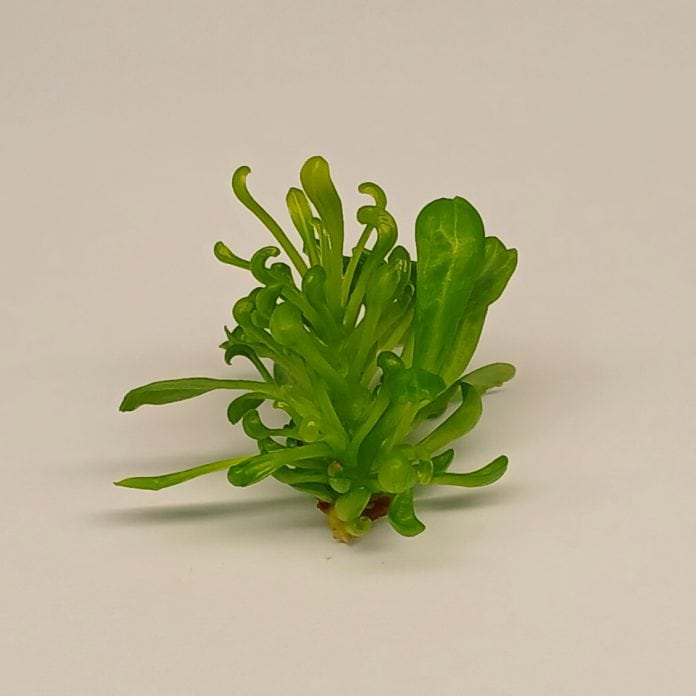Proteas—iconic symbols of South Africa’s fynbos—are the divas of the plant kingdom. Their flamboyant blooms captivate florists, but their stubborn refusal to propagate predictably has vexed growers for decades. Enter tissue culture: a lab-based cloning method that’s part science, part high-stakes botany chess. Here’s how researchers hack nature to multiply these untamable blooms.
Why Proteas Are a Tissue Culture Nightmare
1. The “No Copy” DNA Code
Proteas evolved in nutrient-poor soils and fire-prone ecosystems. Their survival strategy? Invest energy in phenolic compounds and antioxidants—natural warfare chemicals that:
- Block cell division (great for fighting fungi, bad for cloning).
- Oxidize and blacken explants in minutes (like plant self-destruct buttons).
2. Microbial Groupies
Wild Proteas host stubborn endophytes—fungi and bacteria embedded in their tissues. These hitchhikers outsmart ethanol baths and bleach, turning cultures into microbial raves.
3. Genomic Moodyness
Response to growth hormones (auxins, cytokinins) varies wildly between species. What works for Protea cynaroides may doom Protea magnifica.
The 6-Step Clone Protocol (Lab-Tested, Fynbos-Approved)
1. Explant Heists: Robbing Meristems
- Target: Shoot tips (0.5 mm) from disease-free plants.
- Sterilize or Die: 70% ethanol (30s) → 2% NaOCl + Tween-20 (15 mins) → rinse 3x in sterile H2O.
- Pro Tip: Add 100 mg/L ascorbic acid to rinse water to neutralize phenolics.
2. Media Magic: The Secret Sauce
Modified MS (Murashige & Skoog) media works best:
| Component | Role | Protea Quirk |
|---|---|---|
| 0.5 mg/L BAP | Cytokinin (shoot growth) | Inhibits roots if overused |
| 0.1 mg/L NAA | Auxin (root initiation) | Triggers callus in excess |
| 20 g/L sucrose | Energy | Avoid alternatives (e.g., glucose) |
| 2 g/L activated charcoal | Absorb toxins | Non-negotiable for survival |
3. The Contamination Gauntlet
- Week 1: Watch for stealthy endophytes. Cloudy media? Toss immediately.
- Antibiotic Cocktails (gentamicin + rifampicin) reduce losses by 40%.
4. Shoot Multiplication: Slow & Steady
Proteas hate fast growth. Subculture every 6–8 weeks to:
- Split shoot clusters (3–5 shoots per batch).
- Trim hyperhydric (translucent) shoots—they’re doomed.
5. Rooting Roulette
The final boss. Tricks include:
- Dark Incubation: 14 days in darkness ups rooting to 60% (P. repens).
- Pulse Therapy: 24h in 2 mg/L IBA → transfer to hormone-free media.
6. Acclimatization: From Lab to Wild
Gradual humidity reduction over 4 weeks. Use acidic, well-draining mix (peat:perlite:vermiculite = 3:1:1).
Groundbreaking Advances (2020s)
1. Cryopreservation of Endangered Species
- Liquid Nitrogen Vaults: Store embryogenic callus of Protea wentzeliana (–196°C) for future revival.
2. Bioreactor Mass Production
- Temporary immersion systems (TIS) cut costs 50% by automating nutrient baths.
3. CRISPR Clean-Ups
Editing genes like PsPAL (phenylalanine ammonia-lyase) to reduce phenolic sabotage.
5 Common Failures & Fixes
| Problem | Cause | Solution |
|---|---|---|
| Blackened explants | Phenolic oxidation | Pre-treatment with 0.3% PVP |
| Mushroom parties | Endophytic fungi | Culture at 18°C (slows fungi) |
| Stunted shoots | Ethylene buildup | Add 10 µM silver nitrate |
| No roots | Cytokinin residues | Extended wash in hormone-free media |
| Algae invasion | Light leaks | Wrap vessels in foil |
The Bigger Picture: Conservation Meets Commerce
Tissue culture isn’t just for profit. Labs like SANBI’s Millennium Seed Bank use it to:
- Rebuild populations of critically endangered species (Protea denticulata).
- Create disease-resistant hybrids for climate-hit regions.
“We’re not just cloning plants—we’re cloning resilience,” says Dr. Lize Joubert, lead Protea researcher at Kirstenbosch.
DIY Alert: Home tissue culture? Possible, but Proteas demand surgical precision. Start with forgiving species like Protea compacta and invest in a laminar flow hood.
Next time you admire a Protea bouquet, remember: Each bloom likely began as a battle-scarred explant in a petri dish—a tiny warrior of science and survival.



